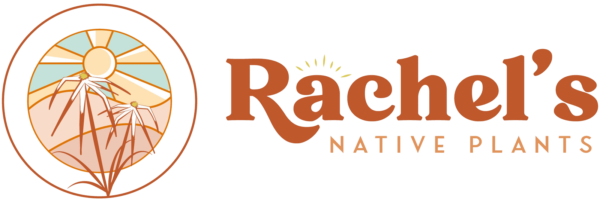Cup Plant stands tall, ascending over its square stem with bright yellow radial flowers,
resembling sunflowers. The leaves have a rough texture, have serrate margins, and are arranged
opposite on the stems. Higher up the plant, leaves connect forming a cup, giving this plant its
common name. Rainwater fills these cups, which small birds bathe in and drink. This flower can
grow in dry or wet soil but does not transplant well once it gets comfortable in its space. It can
even grow in clay but will not tolerate poor drainage or compacted soil. Gall wasp larvae, an
important form of pest control, eat the stems of this plant. Goldfinches and other birds eat the
seeds of this plant, which form around the outer edge of the radial disc. Cup Plant is threatened,
and is a protected species in North Carolina.
NURSERY HOURS
Wednesday: 10-4 Thursday: 10-6 Friday-Saturday: 10-4 Sunday: 12-4
Silphium perfoliatum
Key Info
Scientific Name: Silphium perfoliatum
Common Names: Cup Plant
Family Names: Asteraceae (Composite, or Daisy Family)
Plant Type: Herbaceous perennial
Protected Plant Species: Yes
Leaf Retention: Deciduous
Flower Color: Yellow
Additional Info
Habit: erect
Height: 4-8'
Spread: 1-3'
Soil Conditions: Prefers loam but tolerates clay.
Leaves: broadly lanceolate to ovate
Flowers (or reproductive structures: Showy radial flowers with 20-30 rays around a disc. Long bloom time
Fruit: Winged seeds from the outer ring of the disc
Natural Distribution: Sandy moist bottom lands, floodplains, near stream beds, in or adjacent to open woodland
USDA Hardiness Zone: 3-8
USDA Wetland Indicator Status in NC: Facultative- Hydrophyte
Pollination: Native bees, butterflies, hummingbirds, and beneficial insects.
Wildlife Connections: Gall wasp larvae eat the stems. Small birds water on the cup made by the leaves. Goldfinches particularly love the seeds.
Propagation: Seed
